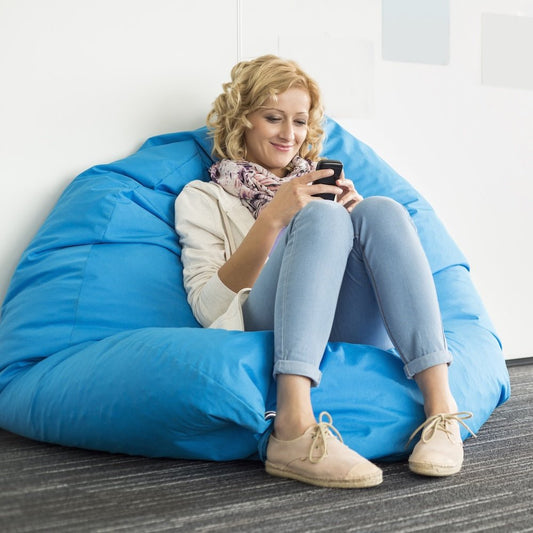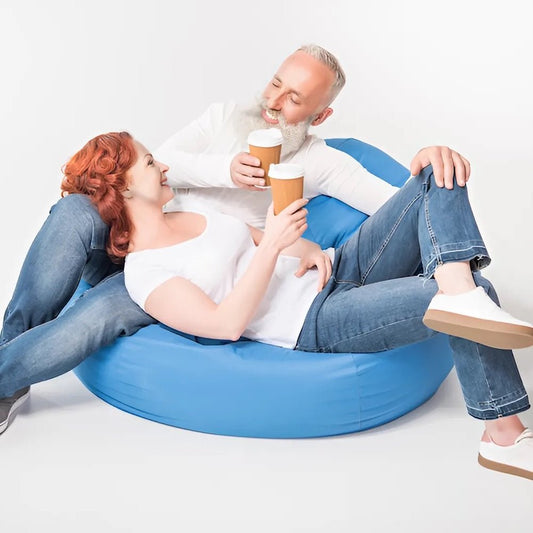Bean bag chairs have become increasingly popular in recent years for their comfort and style and their therapeutic benefits. These versatile seating options have proven to be particularly beneficial for children with autism, providing them with various advantages that aid their development and overall well-being. In this article, we will explore the specific benefits of bean bag chairs for kids with autism, discuss the factors to consider when choosing the right one and provide useful tips for making the most out of this unique seating option.
Autism is a neurodevelopmental disorder that affects communication, social interaction, and behaviour. Estimates suggest that approximately 1 in 54 children in the United States receive a diagnosis of autism, making it one of the most prevalent developmental disabilities. While the symptoms and challenges associated with autism vary from child to child, many children with autism struggle with sensory processing issues, which can significantly impact their daily lives.
Benefits of Bean Bag Chairs for Kids with Autism
Children with autism often face unique challenges when it comes to sensory processing and regulation. They may experience difficulties in sensory stimulation, maintaining proper posture, and finding comfort in their environment. Bean bag chairs have proven to be valuable in addressing these challenges and providing numerous benefits for autistic kids.
Sensory Stimulation
One of the primary benefits of sensory bean bags for autistic children is their ability to provide sensory stimulation. The soft and plush texture of the bean bag chair can offer a comforting and soothing experience. The gentle pressure and tactile feedback from the chair's fabric can help children regulate their sensory input, promoting a sense of calmness and relaxation. This sensory stimulation can assist in reducing anxiety and promoting better focus and attention.
Deep Pressure Therapy
Deep pressure therapy is a well-known technique used to alleviate anxiety and promote relaxation among individuals with autism. Bean bag chairs are excellent tools for implementing deep pressure therapy. The bean bag's filling moulds to the child's body, providing a gentle, even pressure that mimics a comforting hug. This pressure promotes the release of endorphins, which can have a calming effect on the child's nervous system. Deep pressure therapy can help regulate sensory input, reduce stress, and improve overall well-being.
Postural Support
Maintaining proper posture can be challenging for children with autism, as they may struggle with body awareness and control. Bean bag chairs offer excellent postural support due to their ergonomic design. The beans inside the chair conform to the child's body, providing a supportive and comfortable seating option. This support helps children maintain a more upright and balanced posture, which can positively impact their overall motor skills and body awareness.
In addition to these specific benefits, bean bag chairs offer a sense of security and personal space for children with autism. The cocoon-like feeling of sitting in a bean bag chair can provide a safe and enclosed environment, promoting a sense of calmness and reducing the child's anxiety. These chairs can become a sanctuary for children, allowing them to retreat into a comforting and familiar space.
Choosing the Right Bean Bag Chair
When finding the perfect bean bag chair for a child with autism, there are a few key factors to consider. The right bean bag chair can make a significant difference in providing comfort, support, and sensory stimulation. Here are some important considerations when selecting a bean bag chair for children with autism:
Size and Shape
The size and shape of the bean bag chair are crucial for ensuring optimal support and comfort. Choosing a chair that is appropriately sized for the child is essential. A bean bag chair that is too small may not provide the necessary deep-pressure therapy, while one that is too large may not offer the required postural support. Look for chairs designed for children, with dimensions that suit their age and build.
Material and Texture
The material and texture of the bean bag chair can greatly impact the sensory experience of children with autism. Some children may prefer chairs made from soft, plush fabrics that feel cozy and comforting. Others may find chairs with more textured materials, such as vinyl or faux fur, more stimulating. Consider your child's sensory preferences and choose a chair that meets their needs.
Durability and Safety
Since children with autism may have a higher activity level or engage in repetitive movements, selecting a durable and safe bean bag chair is crucial. Look for chairs made from high-quality materials that can withstand rough use and resist tearing or punctures. Additionally, ensure that the chair is sturdy and meets safety standards to prevent potential accidents or injuries.
Involving your child in the selection process may be helpful if they can provide input. Allowing them to touch and feel different bean bag chairs can help determine which one they feel most comfortable with. Additionally, consulting with occupational therapists or other professionals who work with children with autism can provide valuable guidance in choosing the right bean bag chair.
Tips for Using Bean Bag Chairs for Kids with Autism
Creating a Calm Space
1. Establish a designated area: Arrange a specific area where you can place the bean bag chair in your home. This designated space will be a calm and quiet zone for your autistic child to relax and unwind.
2. Minimize distractions: Ensure that the surroundings of the bean bag chair are free from excessive noise, bright lights, or other distractions that may overstimulate your child. Creating a peaceful environment will enhance the bean bag chair's benefits.
3. Encourage personalization: Allow your child to personalize their bean bag chair space by adding their favourite toys, books, or soft blankets. Having familiar and comforting items nearby can provide security and help your child feel more at ease.
Incorporating Sensory Activities
1. Provide sensory toys: Place sensory toys or objects within reach of the bean bag chair. Soft tactile toys, fidget spinners, or stress balls can engage your child's senses and provide additional sensory stimulation.
2. Offer alternative seating options: While the bean bag chair is an excellent choice for providing deep pressure therapy, it is also beneficial to offer alternative seating options. Consider incorporating rocking chairs, therapy balls, or floor cushions to provide variety and cater to sensory needs.
3. Introduce calming activities: Use the bean bag chair to engage your child in calming activities. These activities include reading a book together, playing soft music, or practising deep breathing exercises. These activities can further enhance relaxation and promote a soothing environment.
Monitoring and Adjusting Usage
1. Observe your child's cues: Pay attention to your child's body language and behaviour while using the bean bag chair. If they seem uncomfortable, restless, or exhibit signs of distress, adjusting their positioning or taking a break from using the chair may be necessary.
2. Gradually increase usage time: Start with short sessions and gradually increase your child's time in the bean bag chair. Doing this will allow them to become familiar with the chair and adjust to its sensory input.
3. Seek professional guidance: If you have concerns or questions about using a bean bag chair for your child with autism, consult with a healthcare professional or occupational therapist. They can provide personalized recommendations and guidance based on your child's needs.
Remember, every child with autism is unique, and what works for one may not work for another. It is essential to observe and understand your child's individual sensory preferences and respond accordingly. By incorporating these tips into your child's routine, you can maximize the benefits of using a bean bag chair and create a positive and calming experience.
Conclusion
In conclusion, bean bag chairs can positively impact children with autism. These versatile and comfortable seating options benefit their overall development and well-being.
First and foremost, bean bag chairs offer sensory stimulation, which is crucial for children on the autism spectrum. These chairs' soft, tactile materials can engage their senses and provide a soothing effect. This stimulation can help regulate their sensory processing and provide a calming effect, reducing anxiety and promoting relaxation.
Additionally, bean bag chairs can provide deep pressure therapy, effectively managing sensory processing difficulties. The gentle pressure exerted by these chairs can help children feel grounded and secure, promoting a sense of calmness and improving their ability to focus.
Furthermore, bean bag chairs offer postural support, which is essential for children with autism who may struggle with their motor skills and body awareness. The ergonomic design of these chairs helps maintain proper posture, reducing the risk of discomfort or pain associated with poor seating positions.
When choosing a bean bag chair for a child with autism, it is important to consider various factors. The size and shape should be appropriate for the child's age and size, ensuring optimal comfort and support. The material and texture should be selected based on the child's sensory preferences, providing a pleasant tactile experience. Lastly, prioritize durability and safety to ensure the chair withstands the child's movements and activities without posing any risk of damage or injury.
To maximize the benefits, create a calm space where the child can relax and unwind. Incorporating sensory activities, such as providing textured toys or calming music, can enhance their sensory experience and promote a state of tranquillity. It is important to monitor and adjust the usage of the bean bag chair based on the child's individual needs and preferences, ensuring they receive the optimal amount of sensory input and support.
In conclusion, bean bag chairs can be a valuable addition to the lives of children with autism. Their ability to provide sensory stimulation, deep pressure therapy, and postural support can contribute to their overall well-being and development. By choosing the right bean bag chair and implementing appropriate strategies, parents and caregivers can create a nurturing environment where children with autism can thrive and flourish.




